





The keys to a perennial garden's beauty lie largely unseen. Showy bloomers and striking foliage command attention, but it's well-amended soil, compost, mulch, and nutrients that invisibly fuel the show. In the same way, stakes and supports create a hidden infrastructure that keeps a garden looking its best.
continue reading belowPerennials lean, topple, and flop for a variety of reasons. Sometimes an otherwise sturdy stem tumbles when rain and wind conspire with weighty blooms to bend stems to the ground. In other cases, stems grow lush and weak because of overfertilizing; most established perennials thrive on limited fertilizer. A mulch of compost in spring or an annual addition of an organic fertilizer scratched into soil power plentifulgrowth without creating weak stems.
Sun-loving plants in part shade tend to stretch for the sun and frequently require staking. Other perennials are simply more prone to flop by virtue of large flower heads or lanky stems.
In their natural habitat, many perennials don't require staking because they grow among -- and lean on -- taller, stronger plants, such as grasses, shrubs, or bushy perennials. Tackle leaning and falling stems by emulating nature's planting schemes in your garden, or craft your own system of stakes and supports.
Staking typically falls into two categories: preventive and remedial. Preventive staking involves thoughtful planning and action before stems collapse. It's what you do for known floppers in your garden, such as peonies and meadow rue.
Choose from a variety of stakes to support perennials. Grow-through supports work well with plants that tend to flop just before bloom, such as aster, boltonia, garden phlox, and goldenrod. Select plastic-coated wire cages, tomato cages, or grids for grow-through supports. Grid stakes offer sturdy support for heavy-headed bloomers and multistem perennials, such as peony, false indigo, Russian sage, and tall daisies. You can also use tree and shrub prunings, branches that blow down from trees, or even boughs cut from discarded Christmas trees (after needles fall off).
With preventive staking, insert supports in spring, when plants are emerging from soil. This is vitally important for grow-through and grid stakes. As plants grow, stems weave through stakes, effectively absorbing them into the clump and hiding them from view.
Remedial staking is reactive, inserting supports after perennials fall over because of high winds, strong summer downpours, or other interference. Keep a variety of materials on hand to make supports -- twine, plant ties, bamboo stakes, single stakes, and branched twigs.
In general, when you stake, you want the support to fall somewhere between the midpoint of plant height and the peak growing point. That's easy to judge with remedial staking. With preventive staking, choose supports based on final plant height.
Unleash your creative instincts and invent your own staking system using straight stakes, string, linking stakes, tomato cages, chicken wire, twine -- whatever you have on hand. Approach your staking ideas with a trial-and-error approach. If something doesn't work for one perennial, it might for another. You'll find the best solution as you continue crafting.
Versatile and inexpensive, tomato cages can fill many roles in the perennial garden. Press extra-largeones (3–4 feet tall) into service supporting tall, bushy bloomers such as Joe Pye weed, hollyhock, and meadow rue. Medium-size cages (2–3 feet) graciously corral midrange perennials such as peach-leaf bellflower, purple coneflower, and Siberian iris. Transform a tomato cage into a grow-through support by wrapping and weaving twine across the horizontal support wires to form a loose grid.
Use bolt cutters to transform cages into cut-to-size supports. Snip tomato cage legs just above hoops to form stakes of varying heights. For perennials growing along a fence or wall, clip cages at one spot along the hoop on each horizontal circle and open the cage to form a half-circle support.
Combine stakes and twine to craft custom supports that you adapt and complete during the growing season. Insert stakes in early spring before plants need them. Drive the stakes deep into the soil to anchor them.
As perennial stems emerge, tie twine around one stake and string it the next stake, looping it around that stake a few times before continuing to the next stake. Add string layers throughout the growing season as stems continue to soar skyward. Keep the string tight enough to support leaning stems but loose enough to prevent a trussed-up look.
At the end of the growing season, remove this support when you clean up the garden. Wooden and bamboo stakes slowly rot over time, so it's wise to remove them from the soil over winter. Dipping the ends of wooden supports in wax can help slow the deterioration process.
Form chicken wire into a cage that's slightly narrower than the mature width of the floppy perennial you want to coax upright. Place the wire cylinder against soil, and anchor it by weaving bamboo stakes through the wire into the soil. This is a wonderful choice for bushlike perennials that have thin stems, such as asters, baby's breath, helenium, or plants that rabbits tend to nibble.
There are as many ways to support plants as there are creative gardeners. Shown here are a collection of some favorite kinds that are commercially available, as well as some traditional techniques.
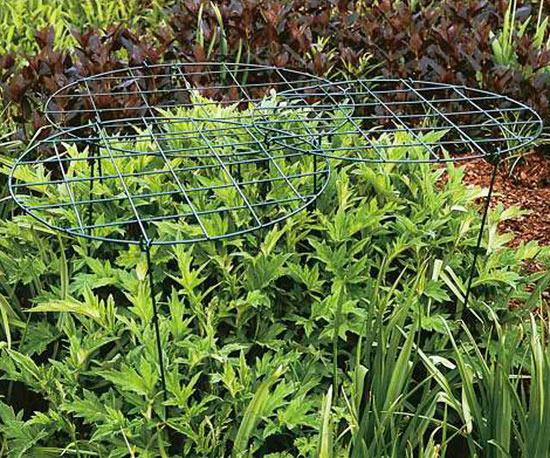
Flat, circular grid with three or four legs; push legs into soil first, then snap ring in place; stems grow through grid.
Use With clump-forming perennials, such as peony, garden phlox, sea holly, monkshood.
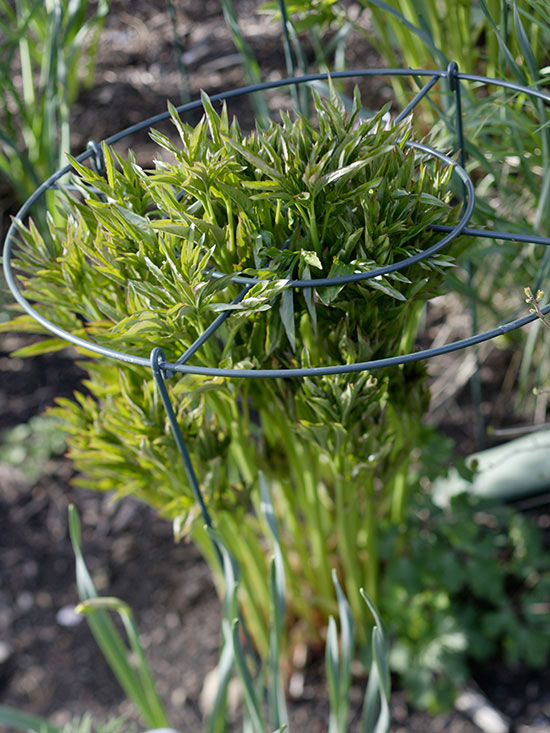
Flat, circular support with concentric circles; three or four legs push into soil; stems grow through circles.
Use With multistem, upright plants with thin stems, such as balloon flower, blanket flower, bugbane, helenium.
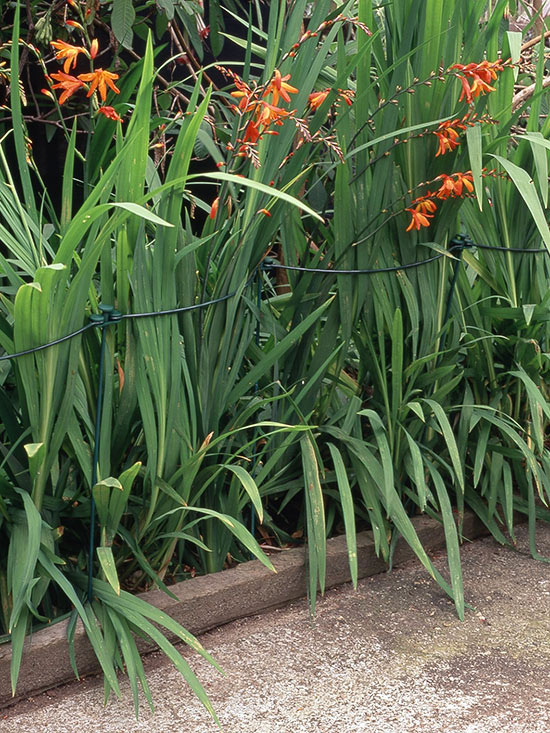
Upright pieces with arms that link and form joints you can bend.
Use With any perennial that has flopped, is overtaking less vigorous plants, or is lean ing into a path. Examples are centranthus, crocosmia, pincushion flower, ladybells, Shasta daisy.
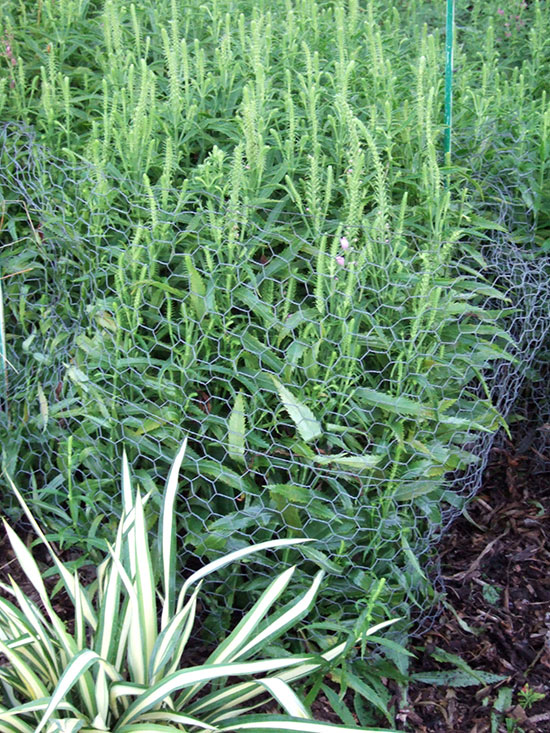
Form a cylinder of chicken wire slightly narrower than the mature width of the plant you're staking; place it over the perennial early in the season; thread a few stakes through the mesh; sink into soil for added support.
Use With sprawling perennials such as aster, blackberry lily, obedient plant, yarrow.
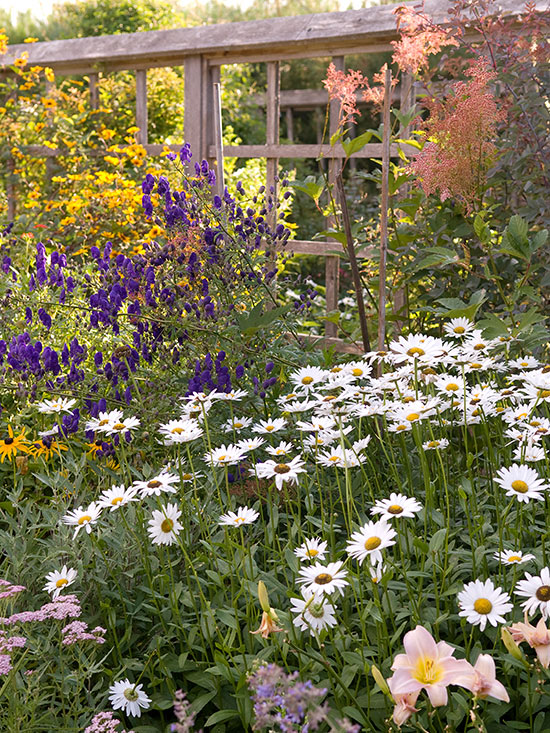
Position floppy perennials near stronger perennial or shrub neighbors and let stems lean on those plants for support.
Use With all perennials.
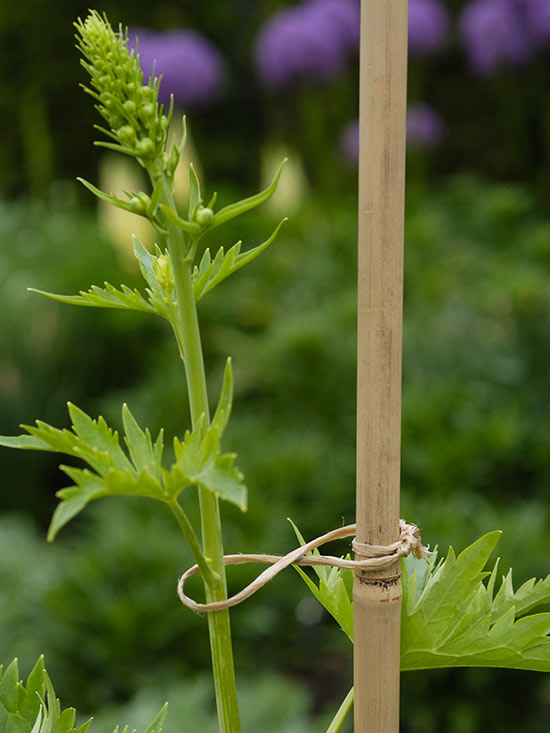
Use twine, hook-and-loop plant ties, or padded wire to bind stems to bamboo or wood stakes; look for single-stem stakes at garden centers.
Use With tall perennials topped with heavy flower spikes, such as delphinium, foxglove, hollyhock, lily.
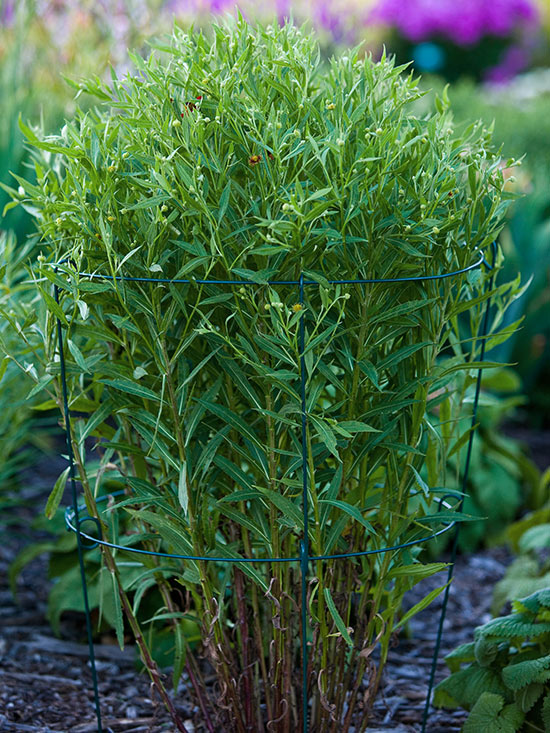
Sink a tomato cage into soil; thread a few stakes through cage sides and sink into soil for added support.
Use With clump-forming perennials, such as helenium, salvia, showy sedum.
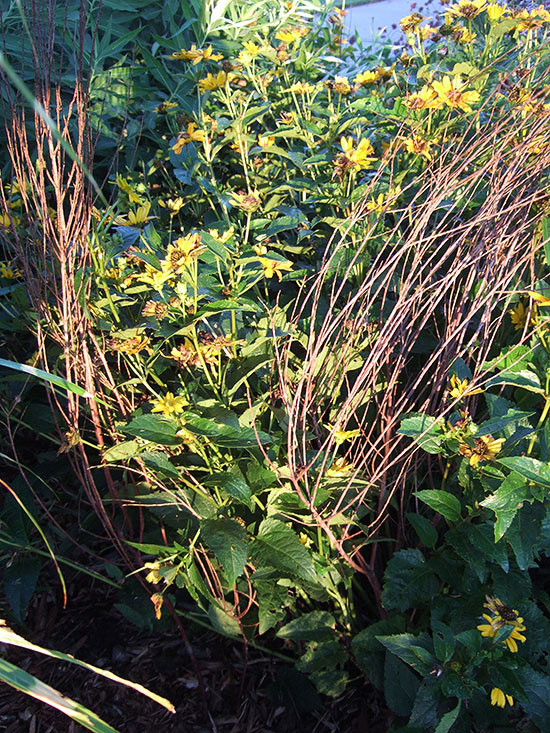
Insert sturdy, branched twigs into soil near floppy plants for support.
Use With clump-forming perennials, such as false sunflower, meadow sage, spotted bellflower.
No matter how perfect your growing conditions, some perennials just grow on the leaning side and benefit from a little extra support from one or more stake types.
Copyright © www.100flowers.win Botanic Garden All Rights Reserved